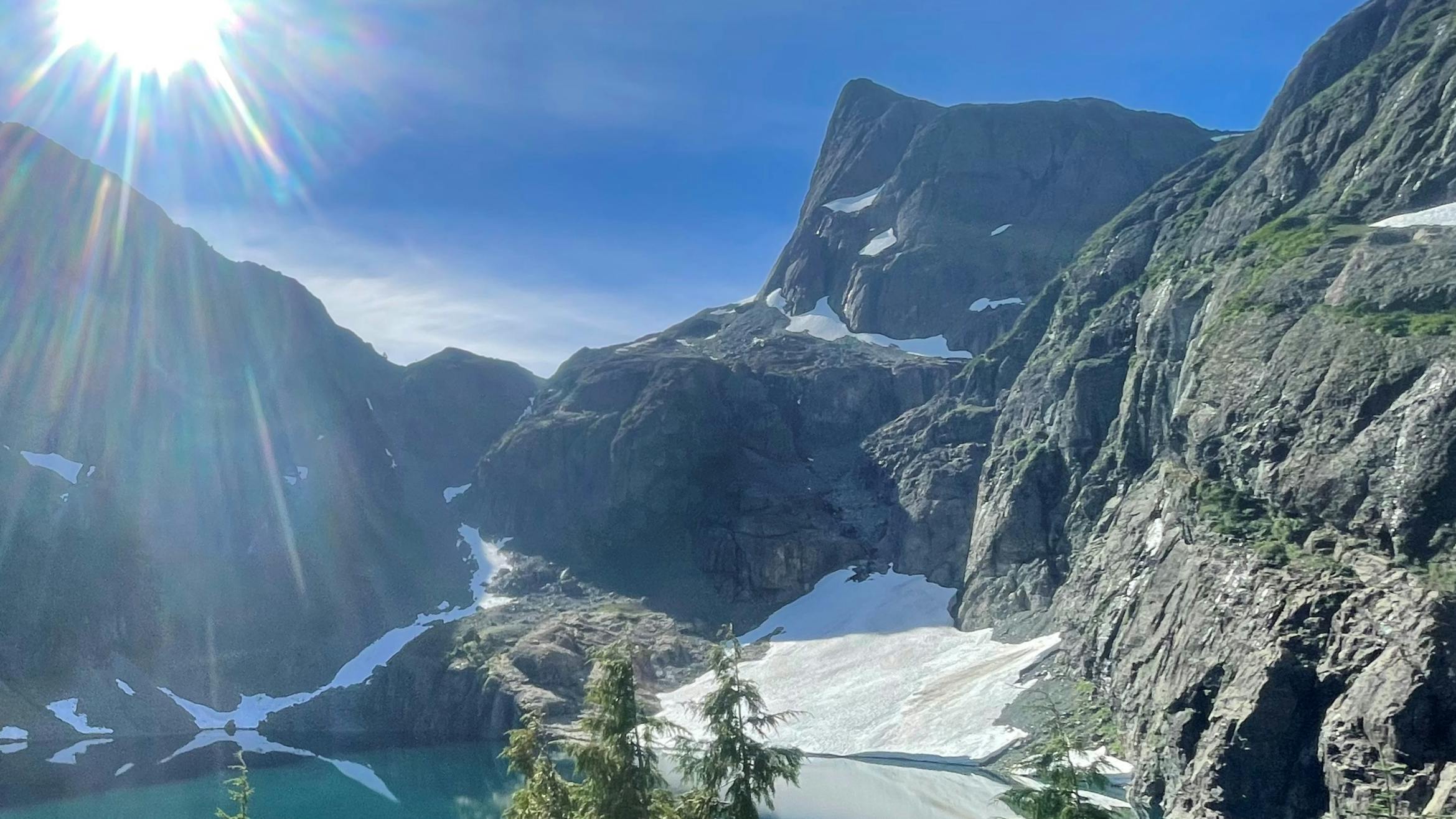June 2025: The key forest zones of ‘Namgis Territory
There are several key forest Zones, often called ecosystems, across ‘Namgis Territory. These Zones stretch from sea level to mountain tops, crossing through valleys, slopes, and changing conditions.
Key forest Zones of ‘Namgis Territory
Each Zone has developed by its unique climate, vegetation, and site characteristics (e.g., soil, elevation, and moisture), however due to climate change these zones will continue to adapt and evolve over millennia. Let’s explore the key forest Zones found in our territory, beginning from lower to higher elevations.
Low Elevation (0–600 m)
Coastal Western Hemlock, Very Moist Maritime (CWHvm1) and Very Dry Maritime (CWHxm)
Zone areas: Beaver Cove, Kokish, Tsulton, Nimpkish Lake, and past Woss.
The most common forest zones on North Vancouver Island and within ‘Namgis territory are CWHvm1 and CWHxm. Ecosystems in these Zones occur at sea level and are full of life. You will find Hemlock, Balsam, Red Cedar, Sitka Spruce, Red Alder and Lodgepole Pine frequently in moist areas, and Douglas Fir and White Pine in the dryer areas. Devil’s Club, Salal, Nettle, Currants, Huckleberry, Strawberry, Bunchberry, Salmonberry and Thimbleberry that are found in these ecosystems are harvested for medicine and food. This productive valley-bottom ecosystem is where most industrial logging has occurred in the past and where often fish values are the highest.
As such, old growth forests in these areas are rare and the majority of the forest here are less than 80 years old. Like the FLP Pilot in the Nimpkish Valley, the T’łuładi Project is focussed on ensuring these low-elevation sites have a chance to develop into fully functioning ecosystems. This will be done by protecting remaining old growth by establishing a conservation network in sensitive sites and along important riparian areas to ensure these important ecosystems are allowed to develop into and be maintained as old growth forests forever, while at the same time, selecting areas that would be appropriate for commercial forestry.
Mid Elevation (600–900 m)
Upper Elevation Moist Forest (CWHvm2)
Zone areas: Steep hillsides by the highway and the top of the Grease Trail.
As you move higher up, the ecosystem gets cooler and less productive, and old growth forests become more common. While similar plants and trees found in the CWHvm1 can be found here in the CWHvm2, Yellow Cedar and Mountain Hemlock begin to appear, Marsh Marigold and Hellebore thrive in poorly drained areas, and Alaskan Blueberry becomes more abundant as Salal declines.
High Elevation (900+ m)
Mountain Hemlock Windward Moist Maritime (MHmm1) and High Elevation Moist Montane Parkland
Zone areas: Upper Noomas, Mount Whatila, and around Mount Cain.
MHhmm1 is a high-elevation forest Zone (above 900 m) that is cold, with shallow soils, and a short growing season. Trees like Mountain Hemlock, Yellow Cedar, and Balsam grow here slowly. Alpine plants like heather, mosses, lichens and hardy wildflowers also survive in these snowy, harsh conditions. Following this Zone at a higher elevation of 1200 m and with harsher elements is the Montane Parkland Zone. Stunted Mountain Hemlock, Yellow Cedar, and Balsam trees grow very slowly and may be centuries old, often resembling natural bonsai trees due to the tough conditions.
Highest elevation (1400+ m)
Alpine Tundra (AT) (not identified on map due to relative size)
Zone areas: Find this Zone on the mountain tops southeast of Bonanza Lake, above Woss Lake and across the southern portion of ‘Namgis Territory
At the very top, the land becomes relatively treeless, has limited soil and supports limited plant life. Lichens, mosses, grass and low growing herbs and shrubs make up the bulk of the plant life on these sites. However, only about 10% of this ecosystem has any kind of plant life. The remaining 90% of these sites is comprised of exposed rock.


